The Matter of Perception
Anna JägerA study on the identity of urban wasteland
unnoticed, misused, isolated, apondend, leftover, shapeless, empty – these are just a few words to describe the unused spaces of a city. The spaces in between public and private, in between habitable and unusable do exist. They are part of our everyday urban scene and yet no attention is paid to them. In a metaphorical sense, these unused spaces can be described as urban wastelands.
The urban realm is defined by drawn lines, be it visible or invisible ones. When architects design buildings and imagine urban life, they are confronted with an enormous number of rules and regulations. Therefore rules and regulations are manifested in architecture and built space. The essay investigates whether urban wastelands are the result of the strict adherence to rules and regulation and misimagine spaces during the design process. Therefore the question arises if urban wastelands are constructed by the imaginary power of architects.
1 (Urban) Wastelands
According to Lucius Burckhardt a wasteland in its narrow sense, meaning land that is available for cultivation yet left to lie fallow.¹ This reflection by Lucius Burckhardt is based on a simple human action - the evaluation of available space. We tend to interpret our surroundings based on an ideal image of the region existing in our mind. This, to quote Vittoria Di Palma, constructs a dichotomy between the paradisiacal, beautiful or “good” landscape and the fallen, ugly, or “bad” landscape, disgust also aids in the creation of a hierarchy, or scale of values, whereby the different kinds of landscape may be judged according to their proximity to, or distance from, either extreme. Therefore, both Burckhardt and Di Palma point out that wasteland is a cultural construct, a creation of imagination, an interpretation of our surroundings, a category applied to landscape rather than a inherent characteristic of them.²
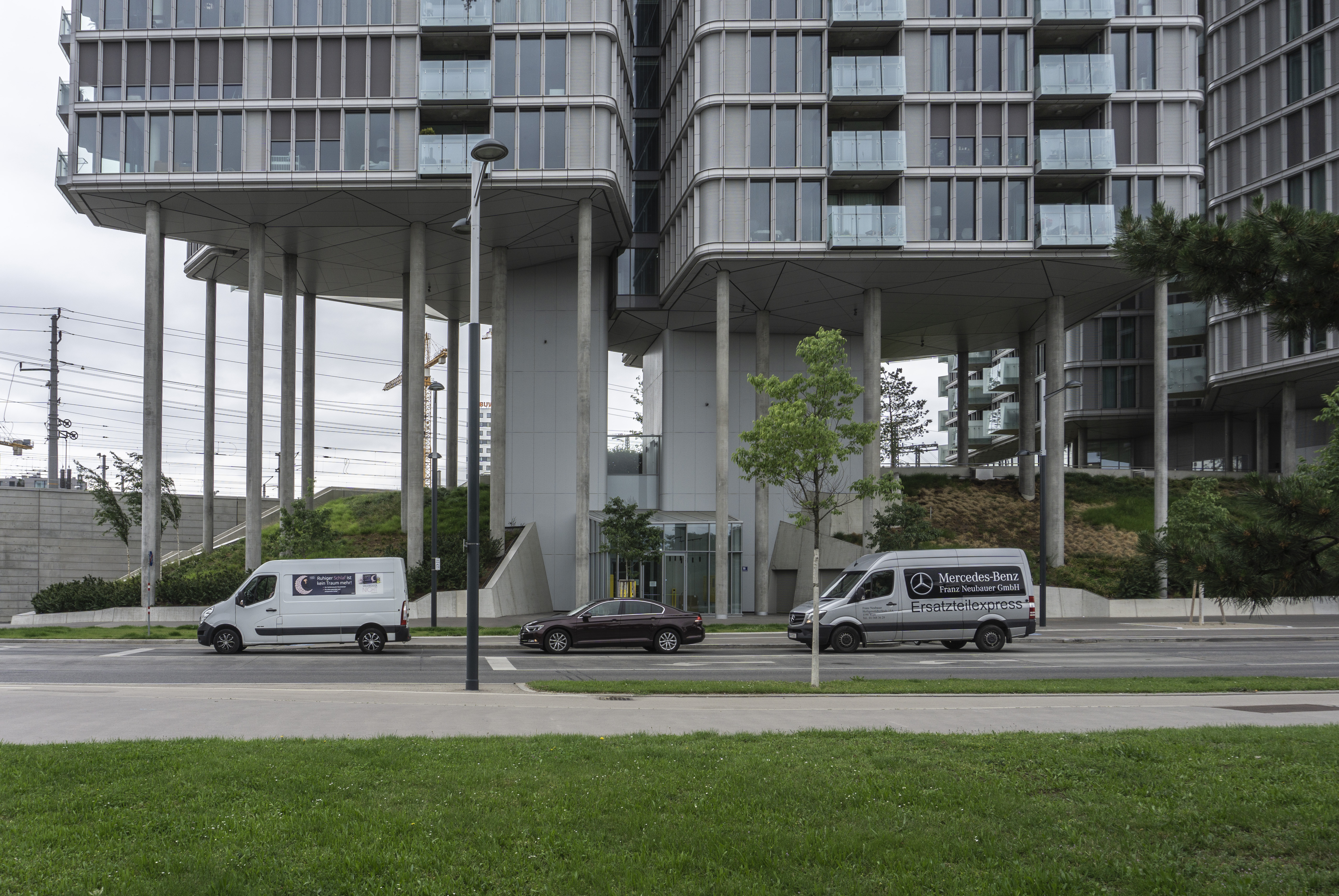
However, the meaning of wasteland in a rural area is much easier to grasp than it is to define its identity within the urban context. History has positioned the term wasteland in the rural setting, since urban ground traditionally has been considered a precious resource. The city, given its age, has its own logic, its own narrative. And yet, as stated in the beginning apondend, misused, vacant, leftover, empty spaces do exist within the city fabric too. Urban wastelands require some explanation, like Burckhardt said, the more established wasteland happens to be, the more the object seen must introduce as well as interpret itself.³ In 1996, the City of Vienna recorded the unused spaces for the first time in Baulückenkataster⁴, with the aim of increasing its urban density. The fact that today hardly any of the recorded spaces still exist, illustrates those spaces in-between are temporary, ephemeral spaces with great potential. In the following the city of Vienna is considered as a case study to describe the contemporary identity, perception and interpretation of urban wastelands. In particular the ground level serves as a good example for the appearance and creation of urban wastelands in connection to rules and regulations.
2 Rules and Regulations
Cities as cultural products are neither ‘built’ nor ‘planned,’ at best they are guided and steered in a certain direction. Therefore, rules and regulations are one of the few tools that are actually suitable to guide future development within those aggregated urban settings.⁵ Over the years, with the growing complexity of cities, also the complexity of rules and regulations for future urban developments increased. The Vienna Building Law, intended to ensure the controlled and sustainable development of the urban realm⁶, for example counts 144 paragraphs by now. But within that set of rules lies a paradox. These rules and regulations try to provide answers for a general, standardized condition, yet not for unplanned, expanding spaces, like the cities we live in.⁷ Could it be that our concept of rules and regulations is outdated insofar as it has failed to keep pace with changes and the increasing complexity of cities? Is it possible that this vast amount of rules and regulations incentivises the appearance and creation of urban wastelands rather than preventing them?
I strongly believe that the field of urban design and architecture should not simply adhere to these standards as some neutrally existing context, but should actively engage and discuss them in order to enable sustainable urban development. To quote Lucius Burckhardt on his approach to urban planning, “a level of uncertainty is needed. [...] For me the main point here is this: to overcome the feeling of total “manmade-ness,” of total manipulation.”⁸ As he points out it is not as important to strictly follow all the rules and regulations as it is much more crucial to search for synthesis with the site during the design process to maintain a level of uncertainty. It is precisely this level of uncertainty that enables citizens to adopt urban spaces and thus create a vibrant, sustainable environment within the city.
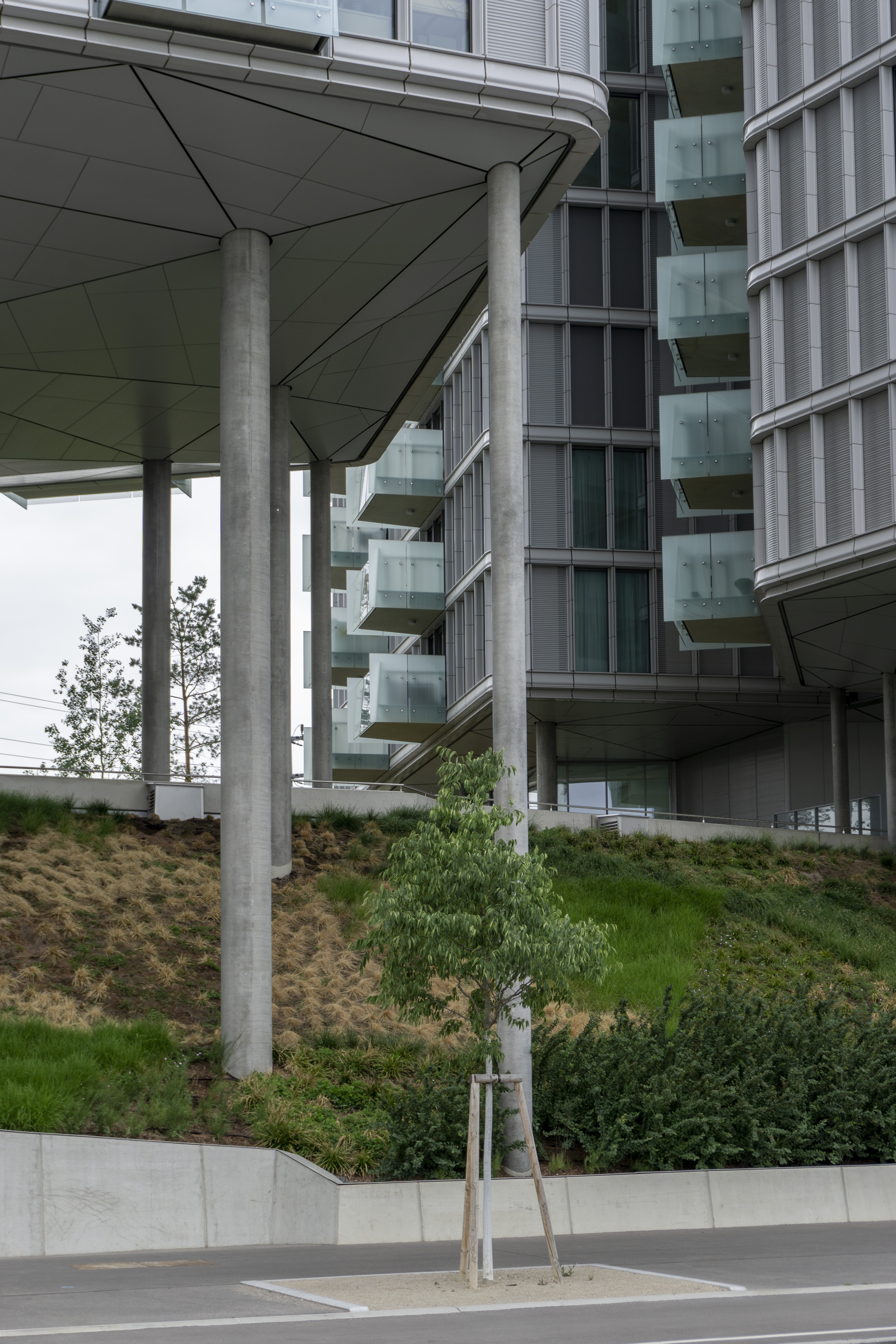
3 Strollology
In order to reveal the identity of a space and engage consciously with the urban fabric the practice of “looking closely” needs to be introduced. In the 1960s Lucius Burckhardt conducted studies that focused on the impact of cognition in urban planning and architecture. He named the new discipline Spaziergangswissenschaft, Promenadologie or in English Strollology and states that walking is the most natural and easiest way to explore a landscape or a city. Following Burkhard’s Strollology discipline, I started to explore the identity of urban wastelands by walking along the streets of Vienna, trying to perceive the yet unnoticed, misused, unused, isolated, apondend, leftover, shapeless, empty spaces of a city.
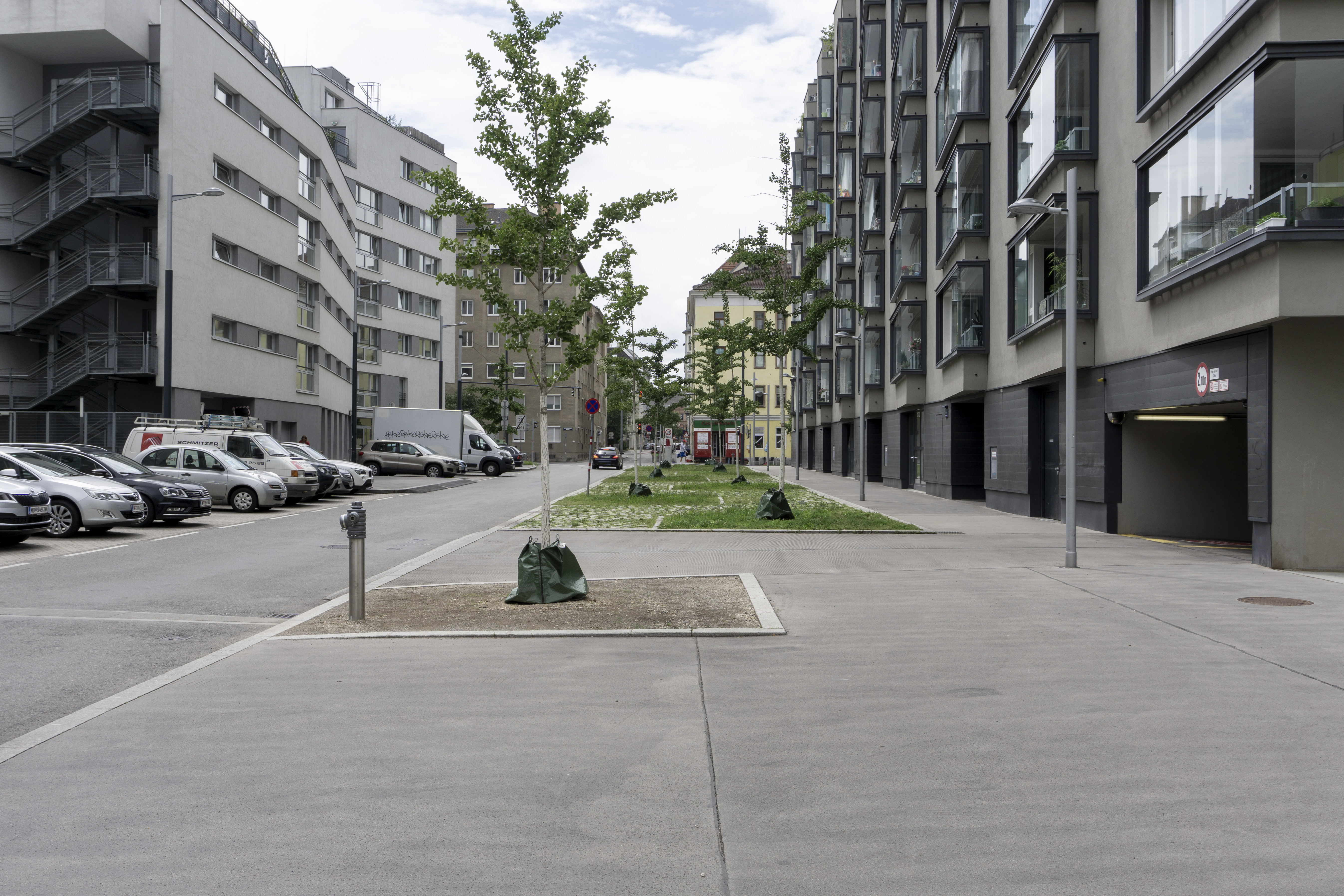
While strolling around I first noticed a residential complex designed by Renzo Piano Building Workshop architects (Figure 01). The building complex is located at Arsenalstraße 16 in a recently developed district and in the immediate vicinity of Vienna central station. What makes the complex unique from its surroundings is its construction method. It seems that the building is erected from a forest of columns (Figure 02). In contrast to the surrounding buildings, here the first 4 to 5 storeys were not constructed to serve as an office or an industrial space, but were left undeveloped. On the eye level of a pedestrian this building creates novel viewports. To give an example: it is possible to see the sky through that forest of columns (Figure 01). A perception like this is unusual and most likely not experienced by citizens within other urban settings in Vienna. For this reason, the green area beneath the main building part has a unique quality to it. However, looking at it more closely one realizes that entering the green area is undesired. This is subtly made clear by a perimeter wall that is more than one meter in height. In this case perhaps it is not the Vienna Building Law creating an urban wasteland, but rather the rules inscribed in the construction elements of the building complex. The element of the wall implies the rule that the green area may not be entered by citizens. Certainly one could discuss the property structure of urban ground at this point, but this discussion is not within the scope of this essay. We rather want to focus on whether the green area around the forest of columns could be identified as urban wasteland, as it is unusable for any citizen (Figure 02).
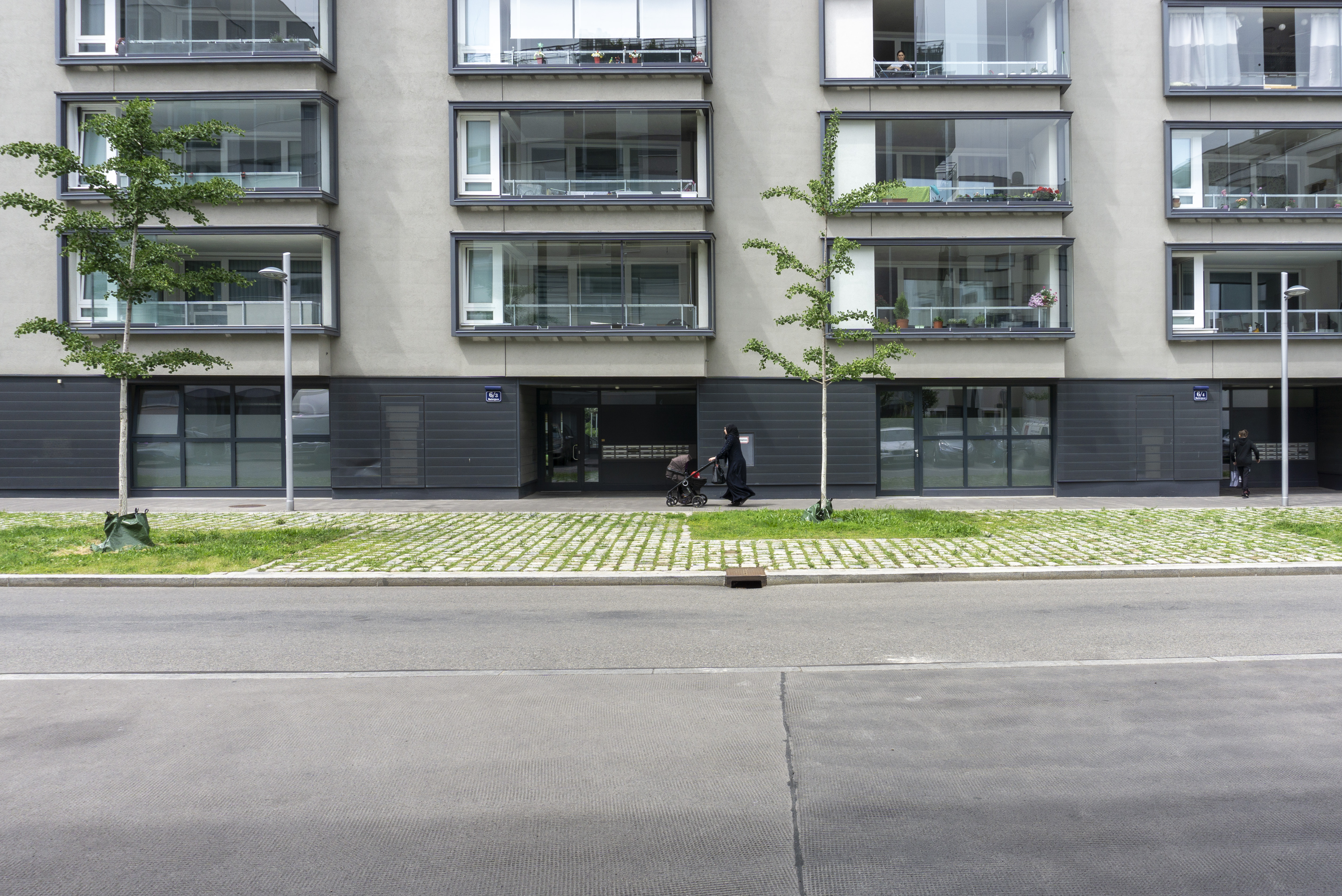
The following example addresses a specific paragraph of the Vienna Building Law. According to the Wiener Garagengesetz, for new residential buildings one parking lot must be created for every 100 m² of living space.⁹ Figure 03 shows a part of Keplergasse in the 10th district of Vienna. This street is also part of an ongoing urban development area, this time situated south of central station. The quiet spacious street is defined by housing on both sides and a green area with some young trees in the middle. Imagine this street in a few years, one can picture people sitting in the shadow of the trees and children playing around them. Looking closely, however, one notices that this is hardly a place for people to meet and children to play. The ground level of both buildings is defined by entrances, bicycle parking, garbage disposal areas and a garage driveway (Figure 04). No efforts were made to encourage people to meet, let alone stay. All of a sudden, the parking lots to the left appear to be in focus of our perception, while the green area with those young trees seems to be nothing but a leftover space (Figure 03). So the question remains, what would the future of this street look like without the law to create that one parking lot for every 100 m² of living space?
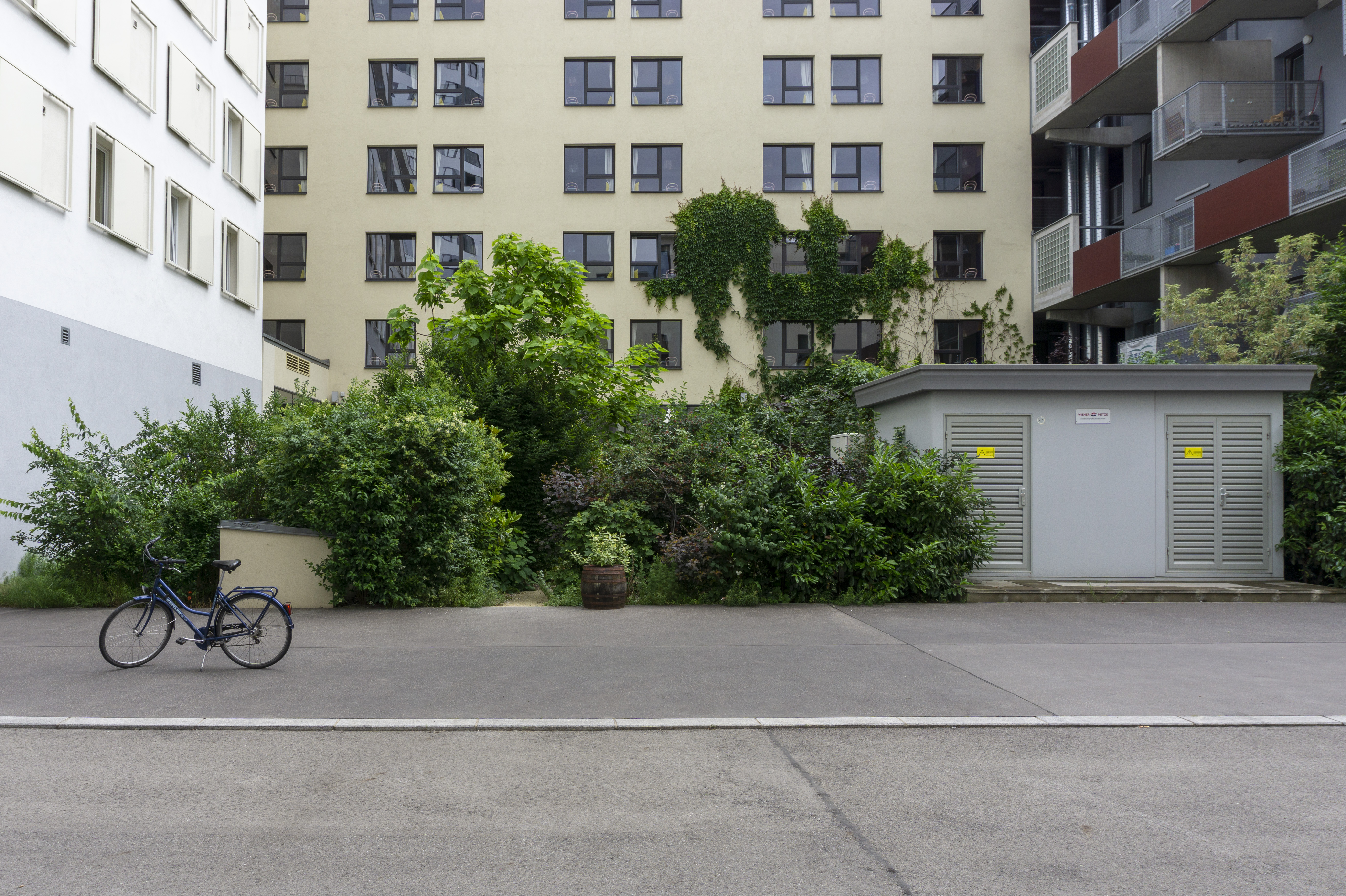
Another attempt to capture the identity of an urban wasteland is the juxtaposition of two photographs taken in Vitalygasse in the 10th district of Vienna (Figure 05, Figure 06). Figure 05 shows a courtyard enclosed at three sides, plants grow wild so that the idea of a small jungle within the city could come to one's mind. Turning around, one stands in front of the yellow residential building, pictured in Figure 06. In case of this residential building the ground level is designed to function as open space with areas to sit and rest. One can assume that the architects have designed the ground level in particular for people to meet. However, looking at it more closely, many signs signaling “private property - do not enter” are showing up. Now, if an urban wasteland is defined in terms of the usability of space by people, the wild courtyard shown in Figure 05 must be stated as urban wasteland. But this assumption is hard to argue for, because as stated in the beginning we tend to evaluate our environment based on an ideal image of landscape. The wild courtyard corresponds with the romantic image of wildernis in our minds. The ground level intended as an open space for people to meet appears to be unused and neglected. Which of these two spaces would you rather identify as urban wasteland, the wild courtyard or the open ground level?
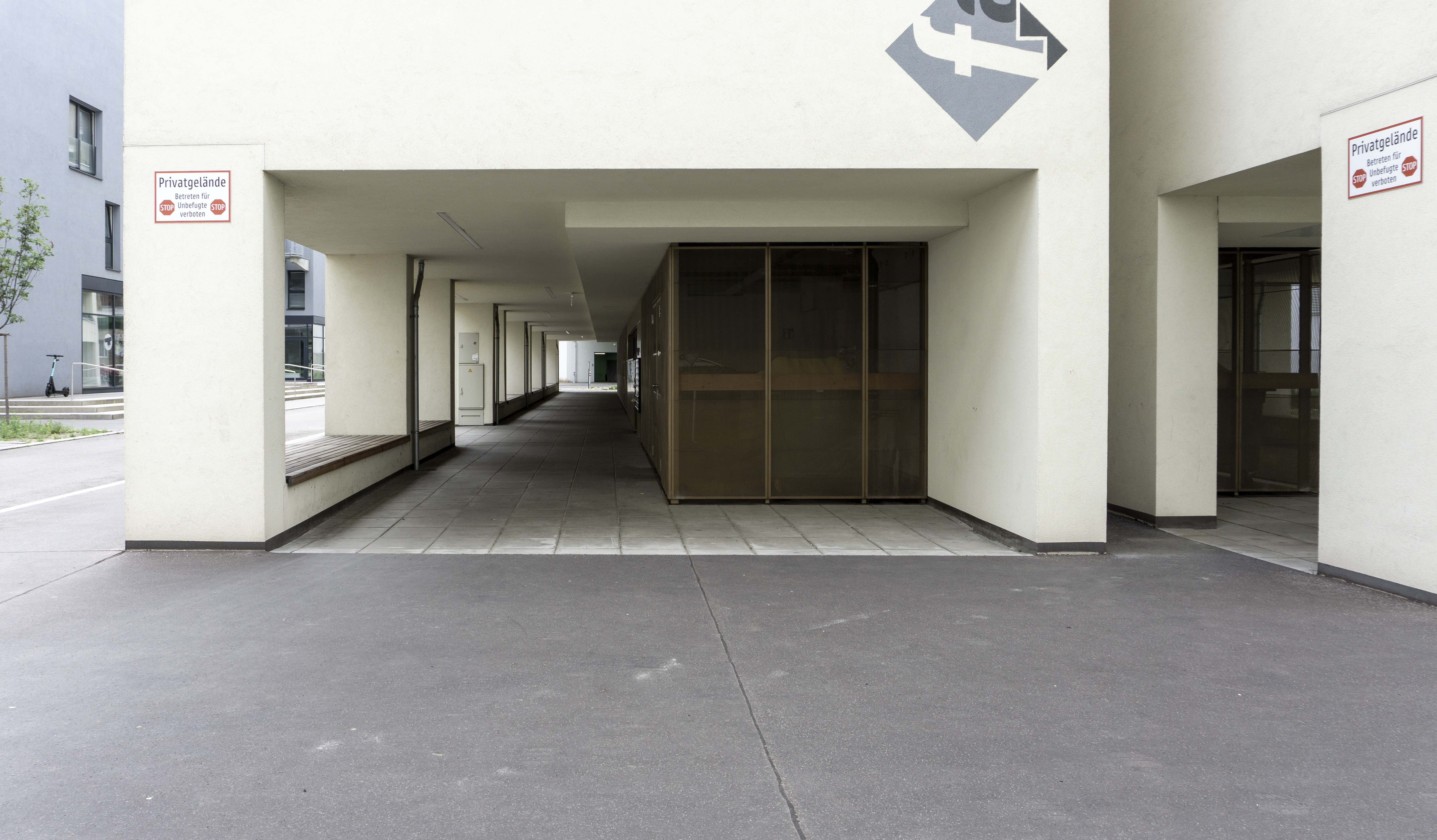
Strolling around, I ended up at one of the most well-known residential complexes of Vienna, the Karl-Marx-Hof. With its spacious, green courtyards one would not assume to find an urban wasteland here. And still, while walking around and looking closely, the front yards shown in Figure 07 caught my attention. In between the building and the street there is a meadow with four meters in width. The perfect lawn is fenced, so no one can enter. At this point I had to think about another paragraph of the current Vienna Building Law. In paragraph 79 it is stated that a front yard with five meters in depth has to be designed if the building does not align with the border of the property. Now it is hard to say if a building law similar to paragraph 79 lead to a fenced front yard at Karl-Marx-Hof. With regard to the study on the identity of urban wastelands, one has to question this particular paragraph of the building law. What is the point of a front yard, if the space is unaccessible and unusable due to its enclosure? Is it legit to set design rules in favor of the cityscape that leaves common spaces unusable?
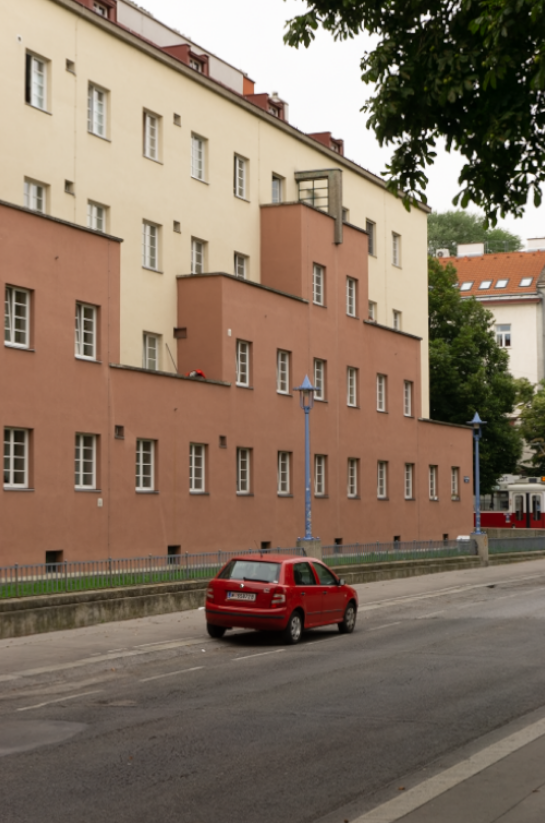
4 Conclusion
As all these examples illustrate, identifying urban wastelands is not an easy task. It can’t be said that urban wastelands are per se created by rules and regulations. What can be stated is that it is a matter of perception, whether we identify certain spaces within the city as urban wasteland or not. By “looking closely” we are able to perceive the unnoticed, because Strollology not only deals with prefabricated ideal images, but with the reality they eliminate.¹⁰ One could argue that within the practice of “looking closely” lies some great potential. By gaining knowledge about the structure of the space, architects are able to unfold the paradox of building rules and regulations. These rules and regulations are set to provide generic solutions to comply with what the author of those rules thinks are contemporary urban requirements. In the end the following question arises: can rules and regulations help us create more social, more livable and more sustainable spaces or are they prevent us from doing just that?
—
- Lucius Burckhardt, Lucius Burckhardt Writings: Rethinking Man-made Environments: Politics, Landscape & Design, p.254
- Vittoria Di Palma, Wasteland: A History, p. 9
- Lucius Burckhardt, Lucius Burckhardt Writings: Rethinking Man-made Environments: Politics, Landscape & Design, p.257
- Baulückenkataster für das dicht bebaute Wiener Stadtgebiet, https://www.wien.gv.at/stadtentwicklung/studien/pdf/b007003.pdf
- Alex Lehnerer, Design Rules and Design With Rules!, https://www.alexlehnerer.com/rules/
- Introduction Vienna Building Law (Einführung in die Wiener Bauordnung)
- This essay focuses on European Cities.
- Lucius Burckhardt, Lucius Burckhardt Writings: Rethinking Man-made Environments: Politics, Landscape & Design, p. 262
- Wiener Garagengesetz 2008 - Stellplatznovelle 2014 https://www.ris.bka.gv.at/GeltendeFassung.wxe?Abfrage=LrW&Gesetzesnummer=20000052
- Lucius Burckhardt, Lucius Burckhardt Writings: Rethinking Man-made Environments: Politics, Landscape & Design, p. 135